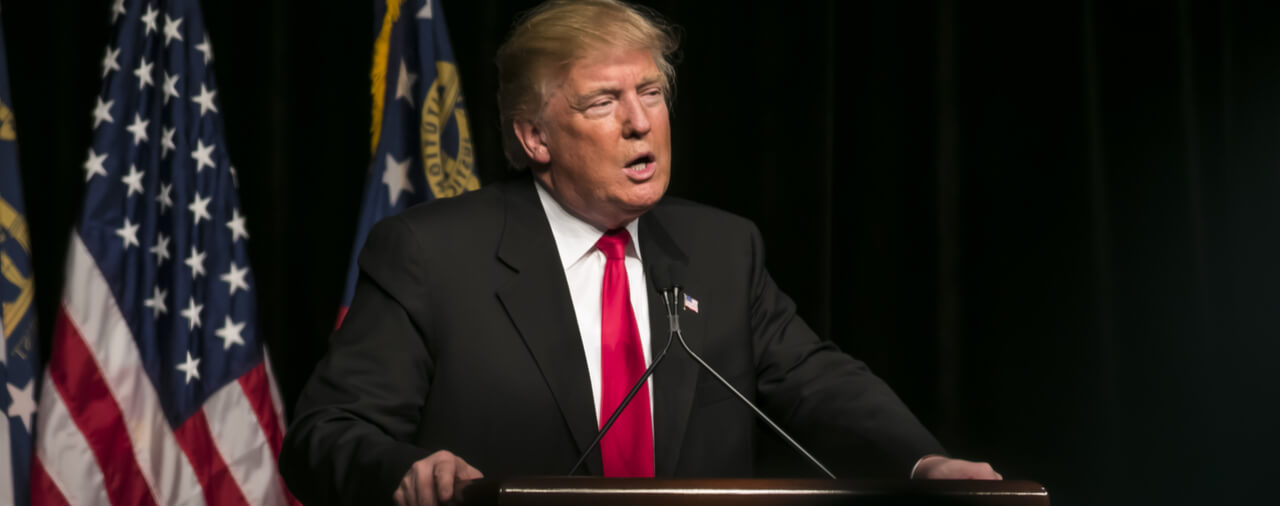- Introduction
- Purpose of the Memorandum
- Border Security Directives
- Returning Nationals to Recalcitrant Countries
- Conclusion
Introduction
On April 6, 2018, President Donald Trump issued a Presidential Memorandum for the Secretary of State, the Secretary of Defense, the Attorney General, the Secretary of Health and Human Services, and the Secretary of Homeland Security titled “Ending ‘Catch and Release’ at the Border of the United States and Directing Other Enhancements to Immigration Enforcement” [PDF version].
President Trump’s memorandum directs relevant officials to formulate policies for detaining, rather than releasing into the United States, removable aliens encountered near the Southwest border. In this article, we will briefly examine the new directives and what they may mean going forward.
Purpose of the Memorandum
President Trump identified several threats to U.S. national security and public safety related to activity along the Southwest border, including “[h]uman smuggling operations, smuggling of drugs and other contraband, and entry of gang members and other criminals at the border of the United States…” Furthermore, he concluded that the backlog of immigration cases pending before immigration courts “has hindered the expeditious adjudication of outstanding cases.” Finally, he stated that shortages of “[b]order-security and immigration enforcement personnel … have become critical.”
Previously, on January 25, 2017, President Trump issued Executive Order 13767, titled “Border Security and Immigration Enforcement Improvements” [PDF version]. In this Executive Order, he directed the Secretary of Homeland Security to issue new policy guidance on the use of the Government’s detention authority under the Immigration and Nationality Act (INA). Specifically, he directed the Secretary of Homeland Security to issues policies that would end “the practice known as ‘catch and release,’ whereby aliens are released in the United States shortly after their apprehension for violations of our immigration laws.” Then-Secretary of Homeland Security John Kelly issued a memorandum to that effect on February 20, 2017, which we covered in detail in a full article on site [see article]. President Trump reported that the February 20 memorandum has “produced positive results,” but that more must be done to fully implement the goals outlined in his Executive Order 13767.
Border Security Directives
In order to rectify the problems described above, President Trump issued the following directives for specified officials.
First, President Trump directed the Secretary of Homeland Security, in coordination with the Secretary of Defense, the Attorney General, and the Secretary of Health and Human Services, to submit to him a report “detailing all measures that their respective departments have pursued or are pursuing to expeditiously end ‘catch and release’ practices.’” The report must be delivered within 45 days of the date of the Memorandum, April 6, 2018.
President Trump specified the information that must be included in the 45-day report.
First, the agencies must identify all measures that have been taken to implement section 5(a) Executive Order 13767 to effect ensuring that appropriate facilities exist to enable the detention of aliens for violations of immigration laws at or near U.S. borders.
Second, the agencies must specify all actions that have been taken in accordance with section 5(b) Executive Order 13767 to assign asylum officers to detention facilities near the U.S. borders “for the purpose of accepting asylum referrals and conducting credible fear determinations and reasonable fear determinations.”
Third, the agencies must detail all measures that have been taken under section 6 of Executive Order 13767 “to ensure the detention of aliens apprehended for violations of immigration law.”
Fourth, the agencies must set forth how they have implemented section 11(a) of Executive Order 13767 to prevent the illegal exploitation of the parole and asylum provisions of the INA to prevent the removal of otherwise removable aliens.
Fifth, the agencies must detail how they have ensured that asylum referrals, credible fear determinations, and reasonable fear determinations are being conducted in a manner consistent with the INA and the implementing regulations, in accordance with section 11(b) of Executive Order 13767.
Sixth, the relevant agencies must list all measures that have been taken to fulfill section 6 of Executive Order 13768 “to ensure the assessment and collection of all authorized fines and penalties from aliens unlawfully present in the United States and from those who facilitate their unlawful presence in the United States.”
Seventh, the relevant agencies must provide a list of all existing facilities “that could be used, modified, or repurposed to detain aliens for violations of immigration law at or near the borders of the United States.”
Eighth, and finally, the agencies are directed to provide a detailed list of credible fear claims that were received, granted, and denied, in each fiscal year going back to fiscal year 2009. This list must also be “broken down by the purported protected ground upon which a credible fear or reasonable fear claim was made.”
Within 75 days of the date of issuance of the Memorandum — April 6, 2018 — the Attorney General and Secretary of Homeland Security, in consultation with the Secretary of Defense and the Secretary of Health and Human Services, must submit to President Trump a report “identifying any additional resources or authorities that may be needed to expeditiously end ‘catch and release’ practices.”
Returning Nationals to Recalcitrant Countries
President Trump also directed the Secretary of State and the Secretary of Homeland Security to submit a report to him within 60 days of the date of the Memorandum, April 6, 2018, “detailing all measures, including diplomatic measures, that are being pursued against countries that refuse to expeditiously accept the repatriation of their nationals.” This report must include all measures that have been taken in accord with section 12 of Executive Order 13768 (Enforcing Public Safety in the Interior of the United States) [PDF version] to implement section 243(d) of the INA, which provides for visa sanctions against countries that are recalcitrant in accepting the return of their nationals. Please see our article on the implementing memorandum for Executive Order 13768 [see article]. For any cases where section 243(d) sanctions have not been pursued, the 60-day report must explain why they have not been pursued.
Please see our related article on section 243(d) sanctions imposed subsequent to the January 25, 2017 issuance of Executive Order 13768 [see article].
Conclusion
President Trump’s memorandum on “catch and release” policies and other issues does not, in and of itself, change the Administration’s policy on border security issues. Rather, it calls for detailed reports on the progress to date and in the future in the implementation of President Trump’s existing Executive Order on securing the border. It is likely that the Memorandum was spurred by the President not having procured the funding he had requested for many of the issues discussed therein, such as for [delete: the provision of] more border security agents and detention beds. Accordingly, the reports on these issues are to focus on determining what measures are already in place to implement Executive Order 13767 and which additional measures are necessary. It is likely that the White House will rely upon the 75-day report in the next round of budget negotiations.
The final part of the Memorandum deals with the return of removable aliens to their countries of nationality. We have discussed on site that the number of countries classified as reluctant or unwilling to accept the return of their nationals has been substantially reduced in the past year. It is unclear whether this section of the Memorandum suggests that President Trump is looking for the imposition of sanctions on the remaining hold-out countries.
Regardless of the outcome of the Memorandum’s directives, an alien facing removal and/or detention for any reason should consult with an experienced immigration attorney immediately, especially in cases where he or she is seeking asylum, withholding of removal, and/or protection under the Convention Against Torture. An experienced attorney will be able to examine the case and determine how to best represent his or her client under the current immigration laws and policies.





